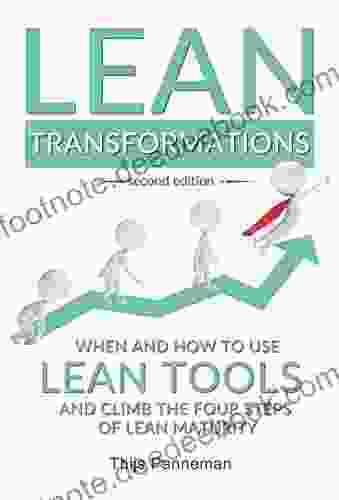An In-Depth Analysis of Pretest-Posttest Designs: A Comprehensive Guide by Peter Bonate

4.7 out of 5
| Language | : | English |
| File size | : | 3282 KB |
| Screen Reader | : | Supported |
| Print length | : | 224 pages |
Pretest-posttest designs are widely used in research to evaluate the effectiveness of interventions or treatments. In this article, we will provide a comprehensive analysis of pretest-posttest designs, covering their elements, types, assumptions, and applications. We will also discuss the statistical analysis of data from pretest-posttest designs and provide guidance on how to interpret the results.
Elements of Pretest-Posttest Designs
Pretest-posttest designs typically involve the following elements:
- Pretest: A measure of the outcome variable is taken before the intervention or treatment is implemented.
- Intervention or treatment: This is the independent variable that is being evaluated for its impact on the outcome variable.
- Posttest: A measure of the outcome variable is taken after the intervention or treatment has been implemented.
- Control group: A group of participants who do not receive the intervention or treatment. This group is used to compare the results of the intervention or treatment group.
Types of Pretest-Posttest Designs
There are two main types of pretest-posttest designs:
- True experimental design: This design involves random assignment of participants to the intervention or treatment group and the control group. This helps to ensure that the two groups are equivalent at the start of the study, which reduces the likelihood of confounding variables.
- Quasi-experimental design: This design does not involve random assignment of participants to the intervention or treatment group and the control group. This can lead to confounding variables, which can make it difficult to interpret the results of the study.
Assumptions of Pretest-Posttest Designs
Pretest-posttest designs rely on the following assumptions:
- The outcome variable is normally distributed.
- The variance of the outcome variable is equal in the intervention or treatment group and the control group.
- The groups are equivalent at the start of the study.
- The intervention or treatment has no effect on the outcome variable in the control group.
Applications of Pretest-Posttest Designs
Pretest-posttest designs are used in a wide variety of research settings, including:
- Evaluation of educational interventions
- Evaluation of medical treatments
- Evaluation of social programs
- Evaluation of marketing campaigns
Statistical Analysis of Data from Pretest-Posttest Designs
The data from pretest-posttest designs can be analyzed using a variety of statistical methods, including:
- Independent-samples t-test: This test is used to compare the means of the intervention or treatment group and the control group on the posttest.
- Paired-samples t-test: This test is used to compare the means of the intervention or treatment group on the pretest and the posttest.
- Analysis of covariance (ANCOVA): This test is used to compare the means of the intervention or treatment group and the control group on the posttest, while controlling for the pretest score.
Interpretation of Results
The results of the statistical analysis can be used to determine whether the intervention or treatment had a statistically significant effect on the outcome variable. A statistically significant effect means that the difference between the means of the intervention or treatment group and the control group is unlikely to have occurred by chance.
When interpreting the results of a pretest-posttest design, it is important to consider the following factors:
- The magnitude of the effect: Even if the intervention or treatment had a statistically significant effect, it may not be large enough to be meaningful.
- The external validity of the study: The results of the study may not be generalizable to other populations or settings.
- The potential for confounding variables: Confounding variables can make it difficult to interpret the results of the study.
Pretest-posttest designs are a powerful tool for evaluating the effectiveness of interventions or treatments. However, it is important to be aware of the assumptions and limitations of pretest-posttest designs before using them in research. By carefully considering the design and analysis of the study, researchers can increase the likelihood of obtaining valid and reliable results.
4.7 out of 5
| Language | : | English |
| File size | : | 3282 KB |
| Screen Reader | : | Supported |
| Print length | : | 224 pages |
Do you want to contribute by writing guest posts on this blog?
Please contact us and send us a resume of previous articles that you have written.
 Book
Book Novel
Novel Page
Page Text
Text Story
Story Genre
Genre Newspaper
Newspaper Bookmark
Bookmark Shelf
Shelf Bibliography
Bibliography Synopsis
Synopsis Annotation
Annotation Footnote
Footnote Manuscript
Manuscript Scroll
Scroll Tome
Tome Classics
Classics Library card
Library card Biography
Biography Memoir
Memoir Reference
Reference Thesaurus
Thesaurus Character
Character Borrowing
Borrowing Stacks
Stacks Archives
Archives Study
Study Research
Research Scholarly
Scholarly Reserve
Reserve Academic
Academic Journals
Journals Interlibrary
Interlibrary Literacy
Literacy Study Group
Study Group Thesis
Thesis Dissertation
Dissertation Storytelling
Storytelling Book Club
Book Club Textbooks
Textbooks Vinod Khosla
Vinod Khosla Christina Baker Kline
Christina Baker Kline Hans Joas
Hans Joas Taran Singh
Taran Singh Nancy Oestreich Lurie
Nancy Oestreich Lurie Tanfer Emin Tunc
Tanfer Emin Tunc Lisa Darcy
Lisa Darcy Sheila Shaffie
Sheila Shaffie Robert K Jackler
Robert K Jackler Michael Rosolski
Michael Rosolski Vicar Sayeedi
Vicar Sayeedi Eigel Wiese
Eigel Wiese Craig Simpson
Craig Simpson Mordecai Roshwald
Mordecai Roshwald Amy Clipston
Amy Clipston Lisa Ann Scott
Lisa Ann Scott Amy Daws
Amy Daws Intisar Khanani
Intisar Khanani Joni Darc Shepherd
Joni Darc Shepherd Vasileios Yfantis
Vasileios Yfantis
Light bulbAdvertise smarter! Our strategic ad space ensures maximum exposure. Reserve your spot today!

 Geoffrey BlairMagnetic Fields 69 Love Songs "Ld Beghtol": An Odyssey into Love's Labyrinth
Geoffrey BlairMagnetic Fields 69 Love Songs "Ld Beghtol": An Odyssey into Love's Labyrinth Connor MitchellFollow ·9.8k
Connor MitchellFollow ·9.8k Larry ReedFollow ·8.4k
Larry ReedFollow ·8.4k Ross NelsonFollow ·4.5k
Ross NelsonFollow ·4.5k Ivan TurnerFollow ·4.4k
Ivan TurnerFollow ·4.4k Truman CapoteFollow ·19.5k
Truman CapoteFollow ·19.5k Thomas PynchonFollow ·10.5k
Thomas PynchonFollow ·10.5k Ernest ClineFollow ·2.5k
Ernest ClineFollow ·2.5k Patrick HayesFollow ·12.5k
Patrick HayesFollow ·12.5k

 Allen Ginsberg
Allen GinsbergUnveiling the True Meaning of Enough: A Comprehensive...
: In the relentless pursuit of progress and...

 Clay Powell
Clay PowellHawker Hunter: The Jet Fighter that Shaped British...
Nestled in the halls of aviation...

 Alec Hayes
Alec HayesWhen and How to Use Lean Tools and Climb the Four Steps...
Lean is a management...

 Trevor Bell
Trevor BellVolume of Charlotte Mason Original Homeschooling: A...
Charlotte Mason's original...

 John Parker
John ParkerAscending Tristan da Cunha: A Comprehensive Guide to...
Prepare yourself for an extraordinary journey...
4.7 out of 5
| Language | : | English |
| File size | : | 3282 KB |
| Screen Reader | : | Supported |
| Print length | : | 224 pages |












